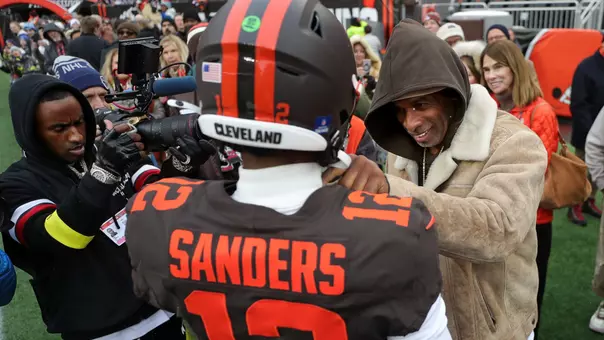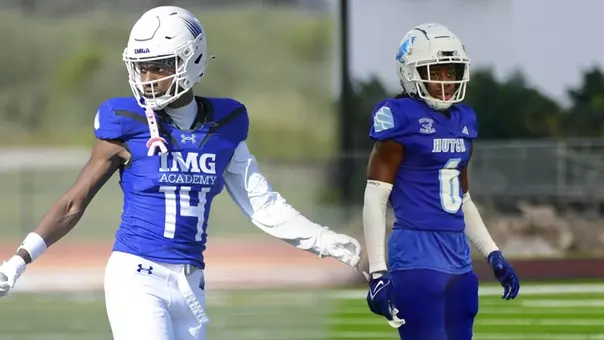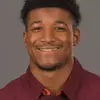Colorado University Athletics

Woelk: 10 Takeaways As Buffs Begin Preparation For Pac-12 Opener
September 23, 2018 | Football, Neill Woelk
BOULDER — This is usually the space in which we take a second look at the Colorado Buffaloes' most-recent game.
But the Buffs had the weekend off, enjoying a bye week as they continue their preparations for Friday's Pac-12 opener against UCLA under the Folsom Field lights (7 p.m., FS1).
That doesn't, however, mean there aren't some storylines that apply to Mike MacIntyre's 3-0 Buffs. Thus, a modified "10 Takeaways" as we await Friday's visit from Chip Kelly and the Bruins.
1. Inactivity can be a positive. By sitting at home this weekend, the Buffs collected the 26th most votes in the Associated Press poll, leaving them just outside the nation's top 25.
It is certainly nice recognition, but at this point of the season, virtually meaningless. Pollsters are still trying to figure out how good many of these teams actually are, especially after a day when No. 13 Virginia Tech lost to previously winless Old Dominion (who earlier this year was thumped by Liberty) and No. 4 Oklahoma needed overtime to beat Army at home.
The polls will shake themselves out as the season progresses. The only thing the Buffs can control is their next game, which brings us to …
2. Don't believe 0-3 UCLA will be a pushover. Late last week, CU's MacIntyre called the Bruins "definitely the most athletic team we've played this year so far."
You could hear Buffs fans rolling their eyes — but this wasn't a head coach dropping into "coachspeak" mode.
Truth is, the Bruins are an athletic team. Former coach Jim Mora recruited well and the cupboard was by no means bare when Kelly arrived. UCLA has quality athletes on both sides of the ball. They have no doubt struggled early in Kelly's first year, but that is understandable — a new system and new culture aren't installed overnight.
But Kelly will have had what amounts to two weeks to study the Buffs, figure out what has worked against them thus far, and throw in some wrinkles to exploit some of Colorado's weaknesses. He is very capable of doing just that.
3. Series history suggests a close game. No matter how good or bad both teams have been in recent years, the matchup has been a close one. The last four games have been decided by a total of 21 points, with the only double-digit edge a 20-10 Colorado win in 2016 that was a 3-point game late until Isaiah Oliver's long punt return for a touchdown gave the Buffs a cushion.
Otherwise, three of the last four games have been decided by 3, 4, and 4 points. Another game decided by a single score would by no means be a surprise.
4. It is unwise to put too much stock in early season scores. Yes, the Bruins lost to Cincinnati, Oklahoma and Fresno State. They have struggled, particularly on the offensive side of the ball. And yes, those games are clearly an indication of how much work needs to be done.
But other teams who have taken some time to find their offensive footing? Try Arizona and USC, both of whom had solid offensive performances in their fourth games to pick up Pac-12 wins over the weekend. The Trojans rallied to beat Washington State while Arizona's new coaching staff is finally figuring out how they want to use quarterback Khalil Tate.
Meanwhile, Colorado's first three opponents have compiled a 1-10 record.
College football is by no means an exact science. Teams get better and talent has a way of surfacing. Of course, unbeaten teams also continue to improve. The Buffs know they have plenty of areas that need work, which leads us to ...
5. Continuing to tweak their offensive line alignment. Last week against New Hampshire, the Buffs gave sophomore Kary Kutsch and redshirt freshman Jacob Moretti their first starts. Kutsch played well, as did redshirt freshman Will Sherman, who came in at left tackle. Both played more than 50 snaps.
Colorado began the season with two starters — Colby Pursell and Brett Tonz — who had never started a Division I game, plus a left tackle, Josh Kaiser, who had only a handful of career starts. As players continue to gain experience, CU's coaches are still mixing and matching to find the best combination possible.
6. Continue to develop run game consistency. CU is averaging a healthy 204.3 yards per game on the ground, but hidden in that number is a 44-yard effort against Nebraska.
The Huskers had some success against CU's offense by loading the box, playing press coverage on the outside and daring Colorado to go up top. The Buffs finally succeeded in that area — but just barely. It won't be a surprise to see more teams play tight coverage on the corners and use an extra man to play the run and put pressure on quarterback Steven Montez.
Sooner or later, the Buffs will be in a situation where they need to run the ball to control the clock and tempo against a good defense. They have the tools to get there; it will be interesting to see if they use more of a one-two punch with Travon McMillian and Beau Bisharat to establish that ground attack.
7. Continue to get receivers in space. From top to bottom, Colorado has as dangerous of a receiving corps as anyone in the Pac-12 — and yes, that includes the talented bunch from USC. The Buffs have four different receivers with receptions of at least 20 yards, and three with catches of at least 40 yards.
What has been fun to watch is how co-offensive coordinators Darrin Chiaverini and Klayton Adams are utilizing those receivers. They are doing it with short, mid- and long-range throws and are finding ways to isolate those players in space, which allows them to pick up yards after the catch. Guaranteed, the Bruins aren't the only team that will be working on some new offensive wrinkles this week.
8. Putting Montez in position to succeed. MacIntyre was quite clear with his assessment of the Buffs' quarterback position after the win over New Hampshire, when he said Montez has to play well for the Buffs to have success.
So far, they have done everything possible to help him have that success. They have simplified his progressions and taken advantage of his arm strength and athleticism. The CU junior has matured in the pocket, is making good decisions and is throwing the ball better than ever, especially the deep ball. If he can keep that trajectory going in the same direction, CU's offense should continue to improve.
9. Getting defensive playmakers involved. Maybe the biggest difference in this year's defense and last year's is the number of players capable of momentum-changing plays. The Buffs have them up front, on the second level and on the back end. They are forcing turnovers, coming up with third- and fourth-down stops and generally controlling the tempo. And, while the "names" — Nate Landman, Rick Gamboa, Davion Taylor and Mustafa Johnson — have been collecting the stats, the Buffs are also getting solid play from their corners, and coordinator D.J. Eliot is using the talent there to bring pressure on occasion. The Buffs are presenting a variety of defensive looks and having success by doing so.
But the quality of offenses the Buffs will face is going to improve in a hurry — and that includes Friday night's matchup with UCLA. If Eliot can continue to find ways to get his best players involved consistently, the Colorado defense has a chance to be good in the Pac-12.
How good? Glad you asked …
10. We don't know how good this team is yet. You can't do better than a 3-0 start, but as we mentioned previously, CU's opponents thus far haven't exactly distinguished themselves. Over the weekend, Colorado State suffered an "embarrassing" (their words) loss to Illinois State to drop to 1-4 while Nebraska was demolished by Michigan to fall to 0-3.
Still, as one CU coach told me last week, "3-0 is 3-0. We want to go beat UCLA and be 4-0. We're really not too worried about anything else."
In a nutshell, that's what it's all about — taking care of business on a week-to-week basis. If the Buffs do that, they will have the opportunity to show how good they could be as the season unfolds.
Contact: Neill.Woelk@Colorado.edu


















